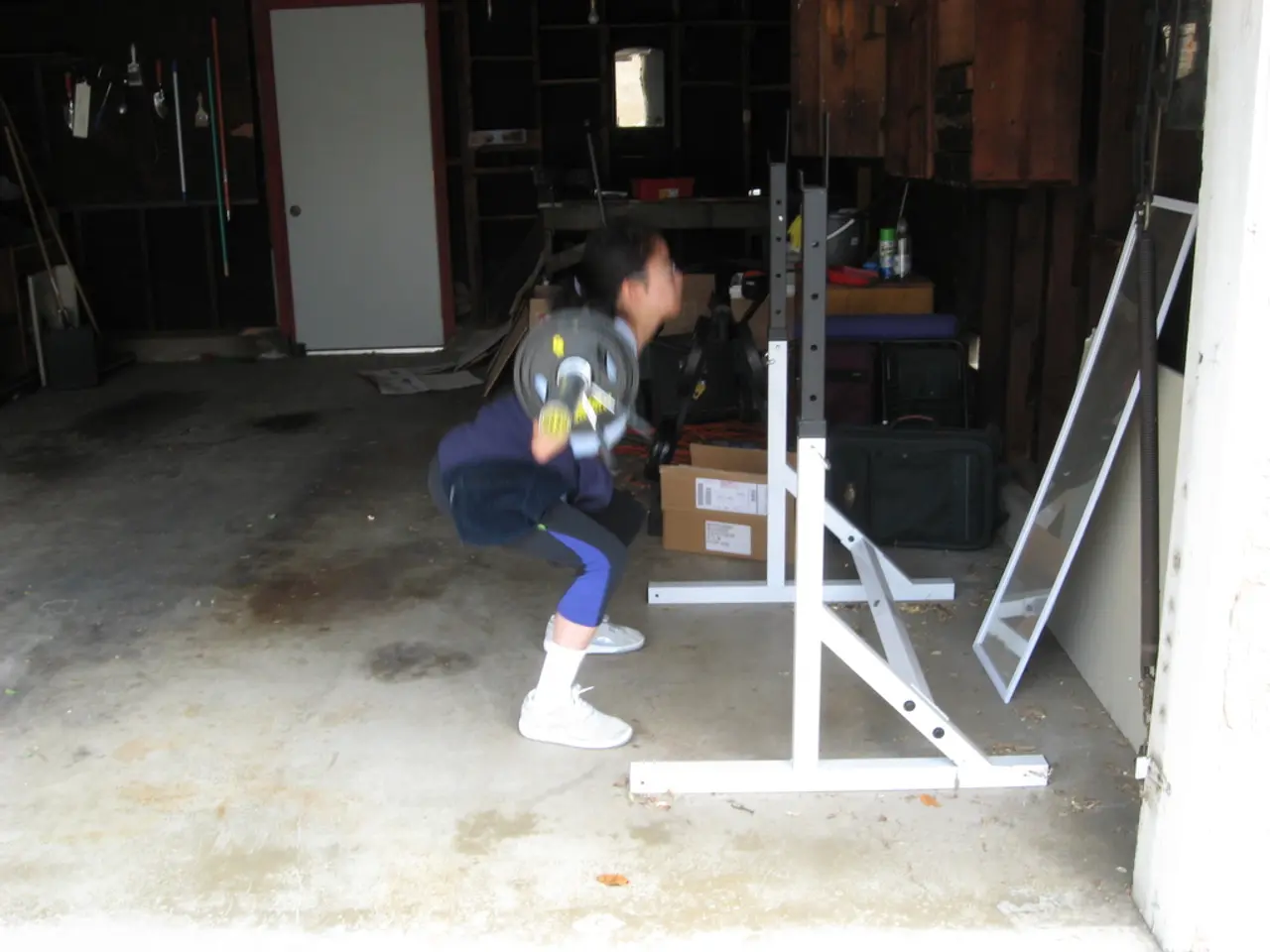Intense Interval Training Workouts: Their Role in Weight Reduction
High-Intensity Interval Training (HIIT) workouts have garnered significant attention in the fitness world for their ability to help individuals shed pounds quickly and efficiently. These workouts, which include exercises such as burpees, plank jacks, and jump squats, are renowned for their capacity to burn a high amount of calories in a short time.
According to research from 2018, HIIT can rapidly increase the oxidative ability of skeletal muscles, resulting in concurrent gains in muscle mass and a significant reduction in fat mass. This makes HIIT an ideal choice for those seeking to lose weight while also improving their overall fitness.
Full-Body Fat Burn HIIT Workouts
One of the key benefits of HIIT workouts is their ability to promote fat loss and muscle activation. These workouts often incorporate functional, multi-muscle group movements such as burpees, lunges, squats, jumping rope, and bodyweight circuits. A 30-minute full-body HIIT session with 30 seconds work/10 seconds rest segments can burn approximately 300–350 calories, while also improving balance and coordination without the need for equipment.
HIIT and Resistance Training
Combining HIIT with resistance training can further enhance its fat-burning potential. For example, interval running alternating with weight lifting, or circuits mixing cardio with bodyweight strength exercises, has been shown to be particularly effective for reducing belly fat and overall fat loss. This is because it incorporates high-resistance, moderate-endurance exercise, which research suggests leads to better fat reduction than just aerobic or isolated abdominal exercises.
The Advantages of HIIT
Studies emphasise that HIIT can burn more calories in a shorter time frame compared to steady-state cardio, and also has significant health benefits such as improved cardiovascular fitness. Popular high-calorie-burning HIIT routines, available on platforms like YouTube, combine cardio and strength moves and are reported to burn over 700 calories in just 30 minutes, reinforcing the effectiveness of cardio-strength hybrids for weight loss.
Considerations and Recommendations
It's important to note that the duration, intensity, recovery periods, and number of cycles in a HIIT workout can vary based on individual preference, fitness level, and goals. The Obesity Medicine Association advises that HIIT workouts can be tailored to suit each person's needs.
A healthcare professional may recommend any of the following HIIT workouts for weight loss: cycling, weight training, treadmill, or a HIIT session on the hydraulic system. It's crucial for people to speak with a healthcare professional before beginning any kind of high-intensity training.
The Science Behind HIIT
Studies have shown that HIIT can reduce both total and visceral fat mass, making it an effective tool for weight loss. Moreover, HIIT can reduce the duration of exercise while exerting the same fat-reducing effect. This means that individuals can achieve their weight loss goals in less time, making HIIT a popular choice for those with busy schedules.
The Right Moves for a Successful HIIT Workout
To perform a burpee, start with the body in a push-up position, push off the balls of the feet to bring the knees into the chest and land in a squat, jump out of the squat while raising the hands before landing softly back into the squat, place the hands back on the floor underneath the shoulders, and spring the legs back to return to the starting position.
To perform a jump squat, stand with the feet shoulder-width apart and the toes pointing slightly outward, bend the knees pressing the hips back as if sitting on a chair to achieve a full squat position, push through both feet, including the heel and front of the foot, and jump straight up, land with the knees slightly bent and return to the squat position, and upon landing, immediately repeat the next jump until the set is complete.
The Future of HIIT
HIIT has gained popularity in the past two decades and is recommended by healthcare professionals for improving physical fitness, physiological functions, and cardiovascular disease risk factors. Furthermore, a 2017 study suggests that HIIT may be better than moderate-intensity workouts for maximising health outcomes. As research continues to support the benefits of HIIT, it's likely that this training method will remain a staple in fitness routines for years to come.
Weight loss generally occurs when a person's calorie intake is regularly lower than the calories they burn throughout the day, including through exercise. By incorporating HIIT workouts into a balanced diet and lifestyle, individuals can effectively manage their weight and improve their overall health.
- Incorporating HIIT with resistance training can further increase its potential for weight management due to the combination of high-resistance, moderate-endurance exercises.
- According to research on health-and-wellness, High-Intensity Interval Training (HIIT) can reduce both total and visceral fat mass, making it an effective tool for weight loss.
- By following a fitness-and-exercise routine that includes HIIT workouts and maintaining a balanced diet, individuals can effectively manage their weight and improve their health.




